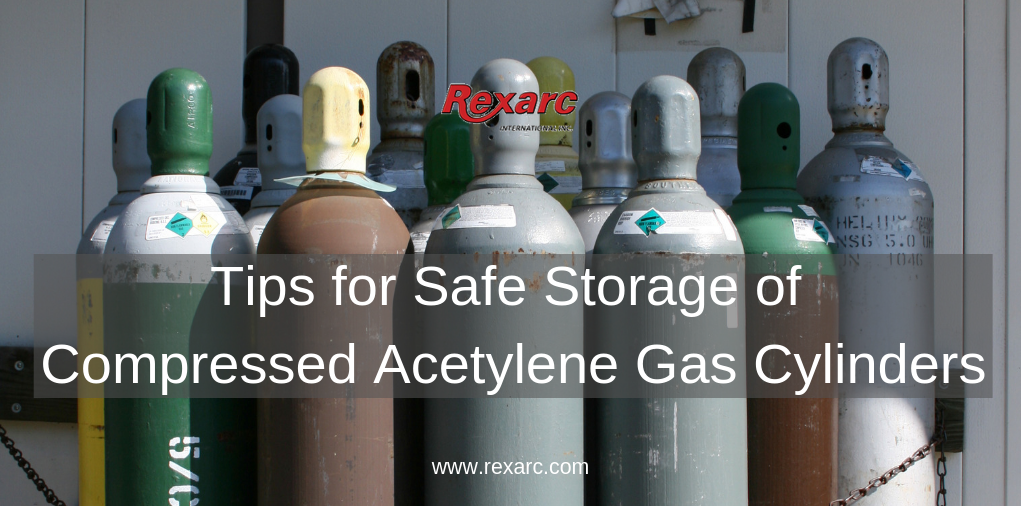Rexarc is currently open from 7:30 AM – 4:00 PM EST, Monday – Friday. Read More
Rexarc is currently open from 7:30 AM – 4:00 PM EST, Monday – Friday. Read More

Today, various types of compressed gases such as acetylene, propane, oxygen, nitrogen, helium, argon, and so on, are used across various industries. Filled into cylinders, these compressed gases may pose chemical and mechanical hazards depending on their properties. They are often explosive, combustible, poisonous, corrosive, or may offer a combination of all these hazards. Thus, their careful handling and storage is very important. This post specifically concentrates on hazards as well as safe storage of compressed acetylene gas cylinders along with some additional information.
How is an Acetylene Cylinder Different from Other Compressed Gases?
Compressed gases are mainly distinguished into three types – liquefied, gaseous, and dissolved. Acetylene is one of the most popular dissolved gases used today. Being chemically unstable, it can even decompose at room temperature if above 15 PSIG. Therefore, acetylene is compressed into a cylinder that has an inert, porous mass made of a calcium-silicate. This mass is saturated with acetone to help absorb the acetylene. When acetylene gas is introduced into the cylinder, it slowly dissolves into the acetone, which can easily absorb up to 8 times the quantity of acetylene compared to a mass without acetone. Typically, a compressed acetylene cylinder is designed to feature the materials in the below-given ratios:
This combination allows acetylene to be stored in cylinders at high pressure without the danger of decomposition or detonation. To be safe during regular use, it is recommended to maintain the gas system pressure at a maximum of 15 PSIG.
Know About the Hazards of Acetylene Gas
Acetylene is one of the well-known fuel gases used across the world. It is also one of the dangerous gases owing to the following properties:
Tips for Safe Storage of Compressed Acetylene Gas Cylinders
Owing to the above discussed hazards, it has become important to take special care while storing and handling compressed gas cylinders of acetylene.
In addition to the above-mentioned safety storage guidelines, it is important that you source these cylinders from a reliable acetylene cylinder manufacturer. Acetylene gas cylinders are built in adherence to established standards such as CGA – G-1; G-1.2; G-1.6; G-1.9; G1.10, European Industrial Gases Association (EIGA) – IGC Doc 123/13/E, and National Fire Protection Association (NFPA) – NFPA Section 55 Chapter 15, 2016.

We are a one stop shop from custom vessel production to full skidding, plumbing and instrumentation.

We stand by our processes and communicate with you on your project status as much or as little as you would like.

We continually reinvest in our people, business, and equipment technology to ship quality products on time.
